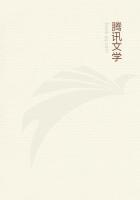Other types of missile may be used. For instance, incendiary bombs have been thrown with success in certain instances. These bombs are similar in shape to the shrapnel projectile, but are charged with petrol or some other equally highly inflammable mixture, and fitted with a detonator. When they strike the objective the bursting charge breaks up the shell, releasing the contents, and simultaneously ignites the combustible.
Another shell is the smoke-bomb, which, up to the present, has been used only upon a restricted scale. This missile is charged with a certain quantity of explosive to burst the shell, and a substance which, when ignited, emits copious clouds of dense smoke. The scope of such a shell is somewhat restricted, it is used only for the purpose of obstructing hostile artillery fire.
The shells are dropped in front of the artillery position and the clouds of smoke which are emitted naturally inter fere with the operations of the gunners. These bombs have also been used with advantage to denote the position of concealed hostile artillery, although their utility in this connection is somewhat uncertain, owing to the difficulty of dropping the bomb so accurately as to enable the range-finders to pick up the range.
Dropping bombs from aloft appears to be a very simple operation, but as a matter of fact it is an extremely difficult matter to strike the target, especially from a high altitude. So far as the aeroplane is concerned it is somewhat at a disadvantage as compared with the airship, as the latter is able to hover over a position, and, if a spring-gun is employed to impart an initial velocity to the missile, there is a greater probability of the projectile striking the target provided it has been well-aimed.
But even then other conditions are likely to arise, such as air-currents, which may swing the missile to one side of the objective. Consequently adequate allowance has to be made for windage, which is a very difficult factor to calculate from aloft.
Bomb-dropping from an aeroplane is even more difficult. If for instance the aeroplane is speeding along at 60 miles an hour, the bomb when released will have a speed in the horizontal plane of 60 miles an hour, because momentarily it is travelling at the speed of the aeroplane. Consequently the shell will describe a curved trajectory, somewhat similar to that shown in Fig. 7.
On the other hand, if the aeroplane is travelling slowly, say at 20 miles an hour, the curve of the trajectory will be flatter, and if a head wind be prevailing it may even be swept backwards somewhat after it has lost its forward momentum, and describe a trajectory similar to that in Fig. 8.
A bomb released from an altitude of 1000 feet seldom, if ever, makes a bee-line for the earth, even if dropped from a stationary airship. Accordingly, the airman has to release the bomb before he reaches the target below. The determination of the critical moment for the release is not easy, inasmuch as the airman has to take into his calculations the speed of his machine, his altitude, and the direction and velocity of the air-currents.
The difficulty of aiming has been demonstrated upon several occasions at aviation meetings and other similar gatherings.
Monsieur Michelin, who has done so much for aviation in France, offered a prize of L1,00--$5,000--in 1912 for bomb-dropping from an aeroplane. The target was a rectangular space marked out upon the ground, measuring 170 feet long by 40 feet broad, and the missiles had to be dropped from a height of 2,400 feet. The prize was won by the well-known American airman, Lieutenant Riley E. Scott, formerly of the United States Army. He dropped his bombs in groups of three. The first round fell clear of the target, but eight of the remaining missiles fell within the area.
In the German competition which was held at Gotha in September of the same year the results were somewhat disappointing. Two targets were provided. The one represented a military bivouac occupying a superficies of 330 square feet, and the other a captive balloon resembling a Zeppelin. The prizes offered were L500, L200, and L80--$2,500, $1,000 and $400--respectively, and were awarded to those who made the greatest number of hits. The conditions were by no means so onerous as those imposed in the Michelin contest, inasmuch as the altitude limit was set at 660feet, while no machine was to descend within 165 feet. The first competitor completely failed to hit the balloon. The second competitor flying at 800 feet landed seven bombs within the square, but only one other competitor succeeded in placing one bomb within the space.
Bomb-dropping under the above conditions, however, is vastly dissimilar from such work under the grim realities of war. The airman has to act quickly, take his enemy by surprise, avail himself of any protective covering which may exist, and incur great risks. The opposing forces are overwhelmingly against him.
The modern rifle, if fired vertically into the air, will hurl the bullet to a height of about 5,000 feet, while the weapons which have been designed to combat aircraft have a range of 10,000 feet or more.
At the latter altitude aggressive tactics are useless. The airman is unable to obtain a clear sharp view of the country beneath owing to the interference offered to vision by atmospheric haze, even in the dearest of weather. In order to obtain reasonable accuracy of aim the corsair of the sky must fly at about 400 feet. In this respect, however, the aeroplane is at a decided advantage, as compared with the dirigible. The machine offers a considerably smaller target and moves with much greater speed. Experience of the war has shown that to attempt to hurl bombs from an extreme height is merely a waste of ammunition.
True, they do a certain amount of damage, but this is due to luck, not judgment.















